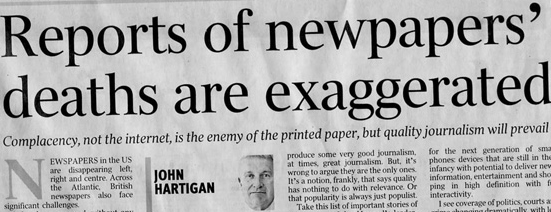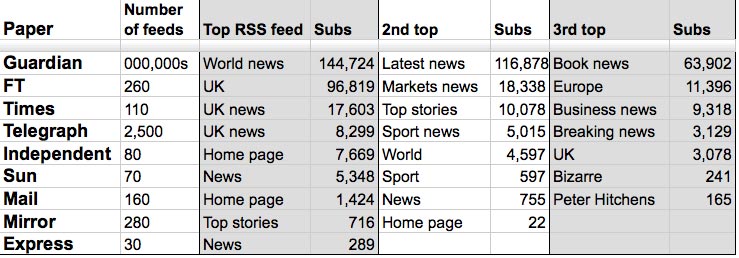The strength of hyperlocal is also its weakness – disparate projects in far-flung places.
But here’s the thing. What works in KW1 – the business model, the editorial proposition – is likely to work just as well in TR19.*
So we have a choice. Wait for exemplars of the form to rise up, then copy and adapt, or give the whole process a hand by collating, sharing, talking and learning. Right now.
Let’s do the latter. Here’s a quick and dirty call to action:
1. Find out what’s out there
In the United States they are doing just that.
The City University of New York Graduate School of Journalism has invited ‘bloggers, independent journalists, website publishers and entrepreneurs’ to complete a survey so it can ‘gather information and innovative ideas from across the country’.
“We want to bring facts, figures, and business analysis to the debate over the future of journalism,” it states.
Where’s the equivalent effort over here?
I’m told that there are voices in Ofcom, the media regulator, who want to collate information about all of the little community newsletters and bigger sites which could now be called hyperlocal.
If that’s the case, it’s time to get moving. Oh, and we’ll have some of that US data when it’s ready, too.
2. Share ideas
Good practice, sound business models, strong feature strands and story hooks are not geographically-defined. So share, feed off each other, beg, borrow and steal.
Talk About Local is a good start. More, please.
3. Share resources
Can you apply the franchise model to the hyperlocal? For some the answer is a definite yes.
Again Talk About Local offers a possible lead with its plan to seed 150 sites in deprived areas nationwide.
Paul Bradshaw and Nick Booth’s Help me Investigate, is another service with franchise potential.
As is Mapumental.
This is a MySociety.org concoction and, like Help me Investigate, is a recipient of 4iP seed funding. Mapumental is postcode-based tool that brings together publicly available local house price and transport data and mashes it up with a ‘scenicness’ rating .
MySociety is also responsible for FixMyStreet. Both are centrally-built pieces of software with a hyperlocal application.
Integration is the key.
4. Share content
Like franchising, syndication is another old media model that has a home in the brave new world of hyperlocal.
And there is a commercial opportunity for those who create usable aggregation models.
Take Outside.in which has just launched a service in the United States it claims ‘will allow users to quickly create a mass amount of hyperlocal news pages’.
Outside.in is coming to the UK, but why isn’t a UK start-up doing this for the UK market? Perhaps one is. Time to make some noise.
5. Engage government
There’s a crisis in the public service provision of local news. If you want proof just look at the horse-trading between ITV and Ofcom. It’s a perfect opportunity for the government to think laterally.
Yet despite the warm words – and suitable use of new media lingua franca – in last month’s Digital Britain report, Lord Carter and co failed to put anything radical in train.
Carter’s defence is that this report was a sprawling undertaking and wasn’t designed to mandate government.
If so, someone needs to pick it up in Whitehall, but also in county halls up and down the country.
Rather than fund me-too freesheets that threaten to kill off local newspapers, local authorities would be better advised to help provide the infrastructure for hyperlocal.
It’s time to free your data for postcode-based applications, create a support system for local citizen journalists and use those soon-to-be-thriving platforms to promote the uptake of online public services.
Enough of the action plan. Go create.
(*That’s John O’Groats to Land’s End, postcode fans. Well, near enough.)
Jon Bernstein is former multimedia editor of Channel 4 News. This is part of a series of regular columns for Journalism.co.uk. You can read his personal blog at this link.

